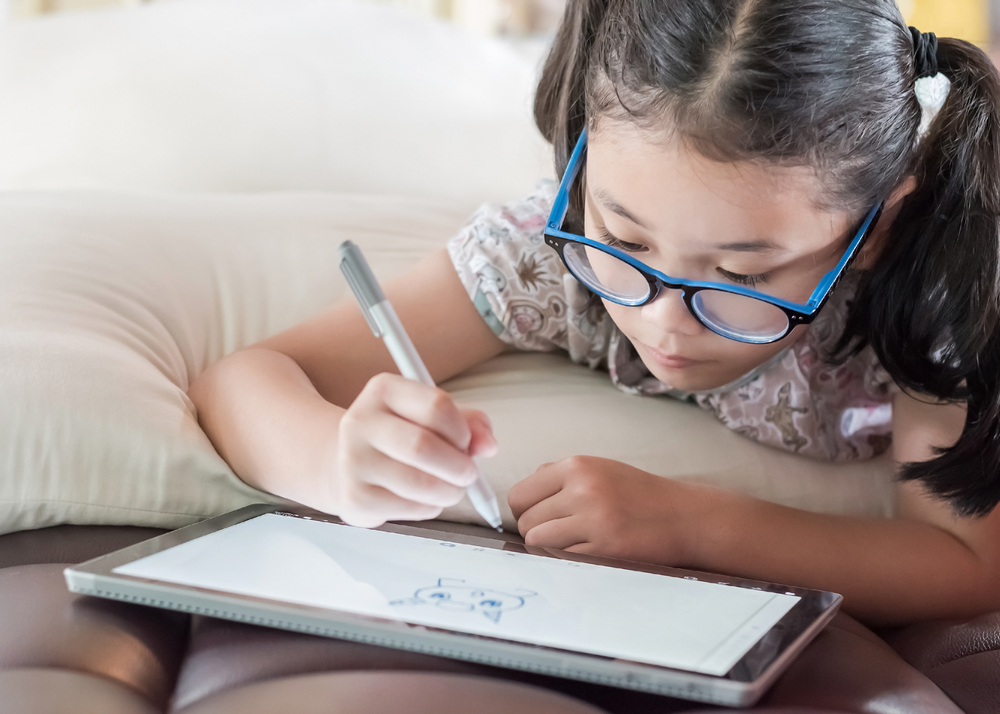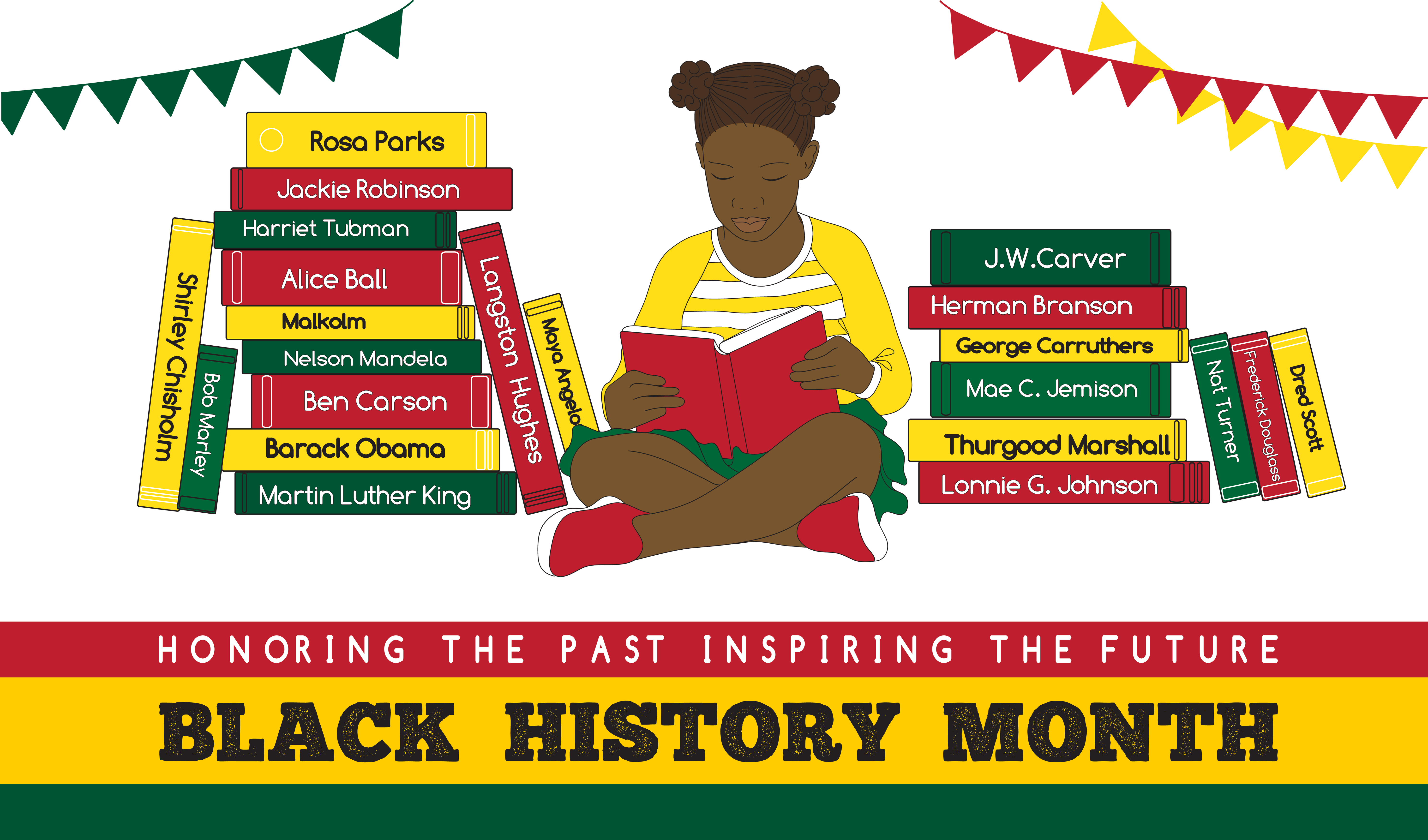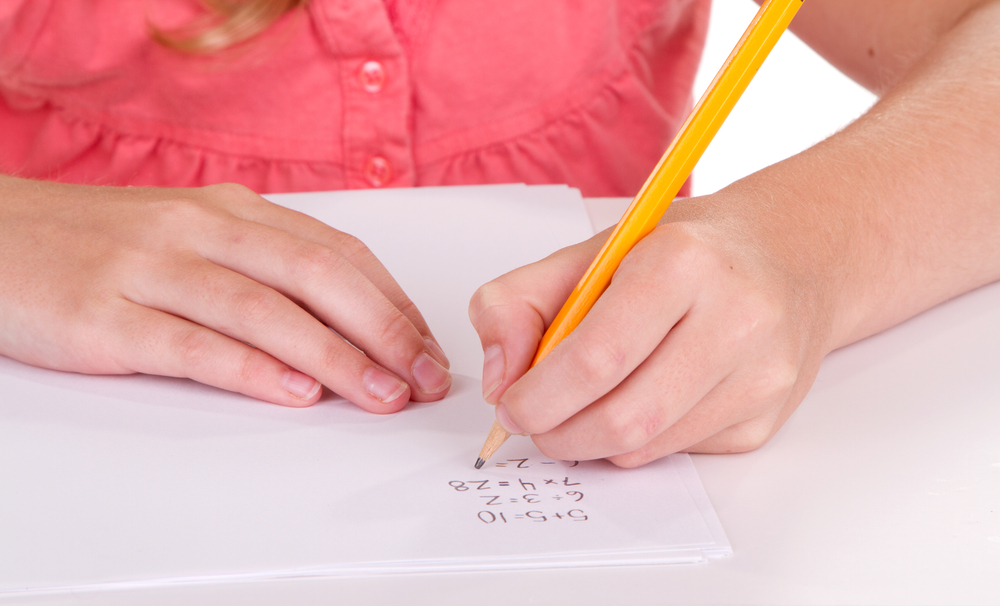Normal Poems Worksheets Activities With Answers for Ages 4-8
10 filtered results
-
From - To
Explore our engaging "Normal Poems Worksheets Activities with Answers" designed for children aged 4-8! These interactive worksheets aim to foster a love for poetry while enhancing literacy skills. Each activity encourages creativity and comprehension, featuring familiar themes and fun exercises suited for young learners. Kids will enjoy reading and responding to various poems, answering questions, and completing exciting tasks that boost their understanding of rhythm and rhyme. Our answers are included to support educators and parents in guiding children through the activities. Fuel your child’s imagination and language development with our captivating poem worksheets today!
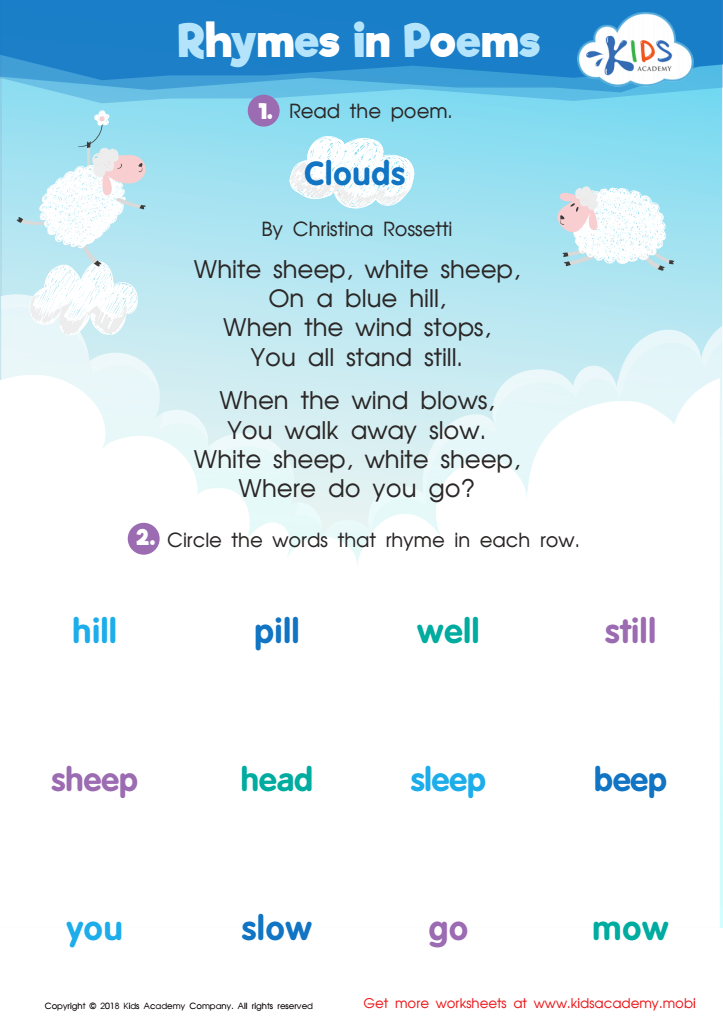

Rhymes in Poems Worksheet
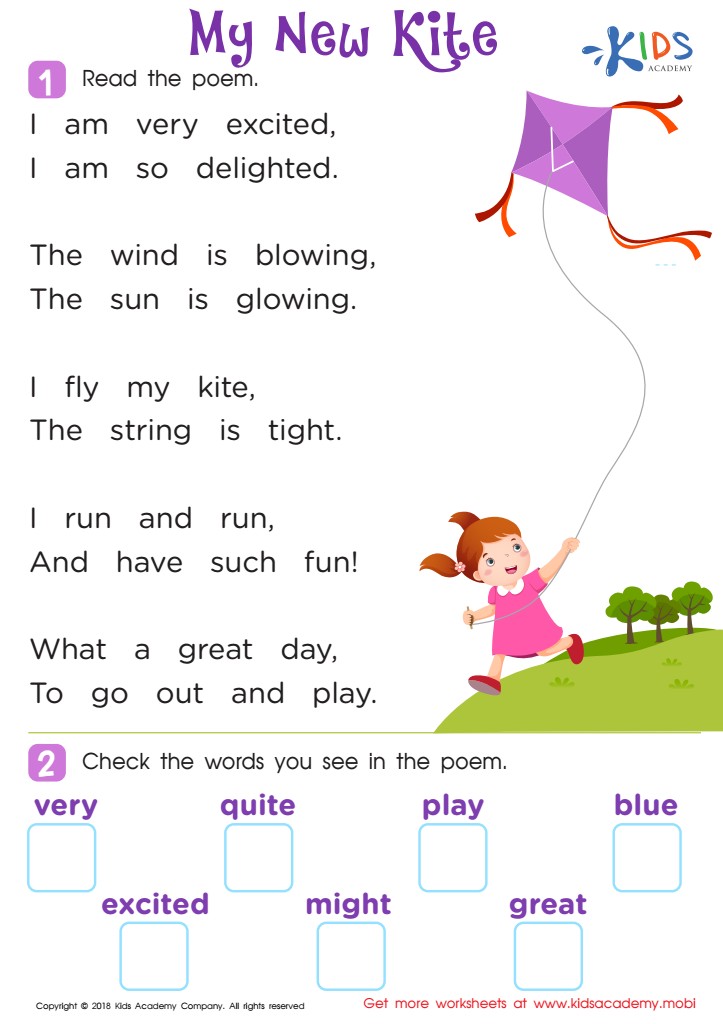

Poem: My New Kite Worksheet
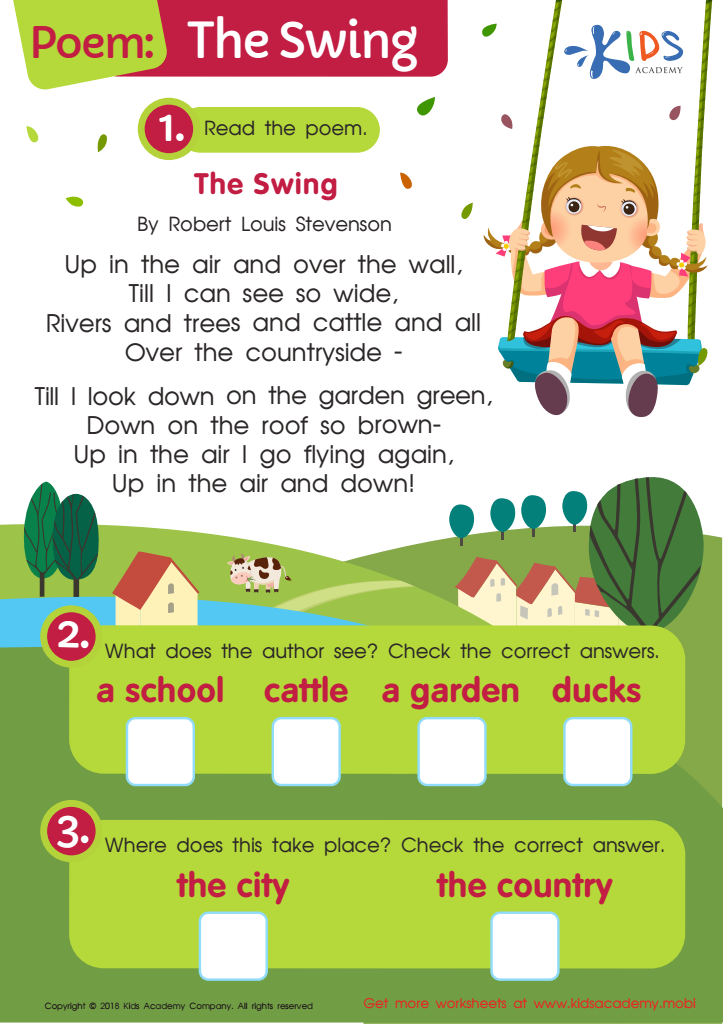

Poem: The Swing Worksheet
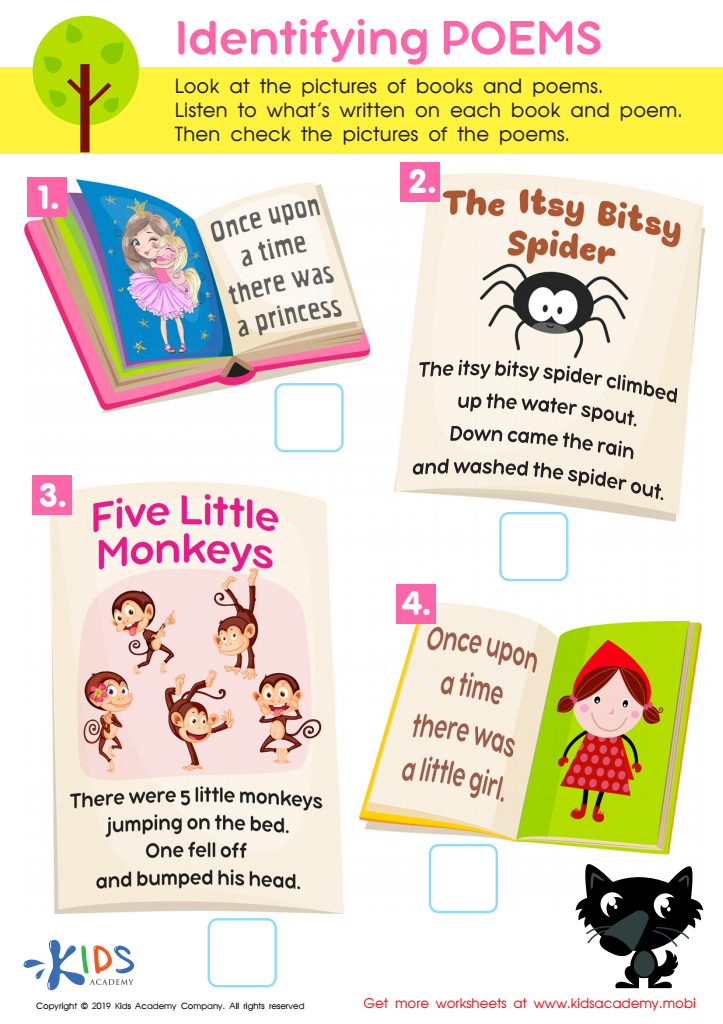

Identifying Poems Worksheet
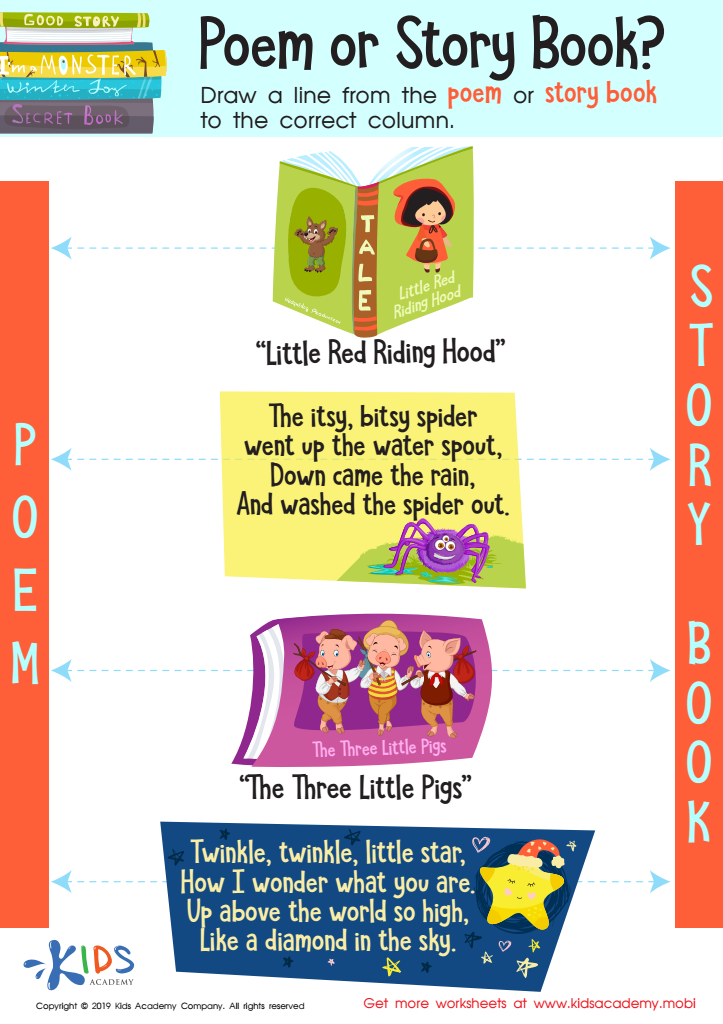

Poem or Story Book? Worksheet
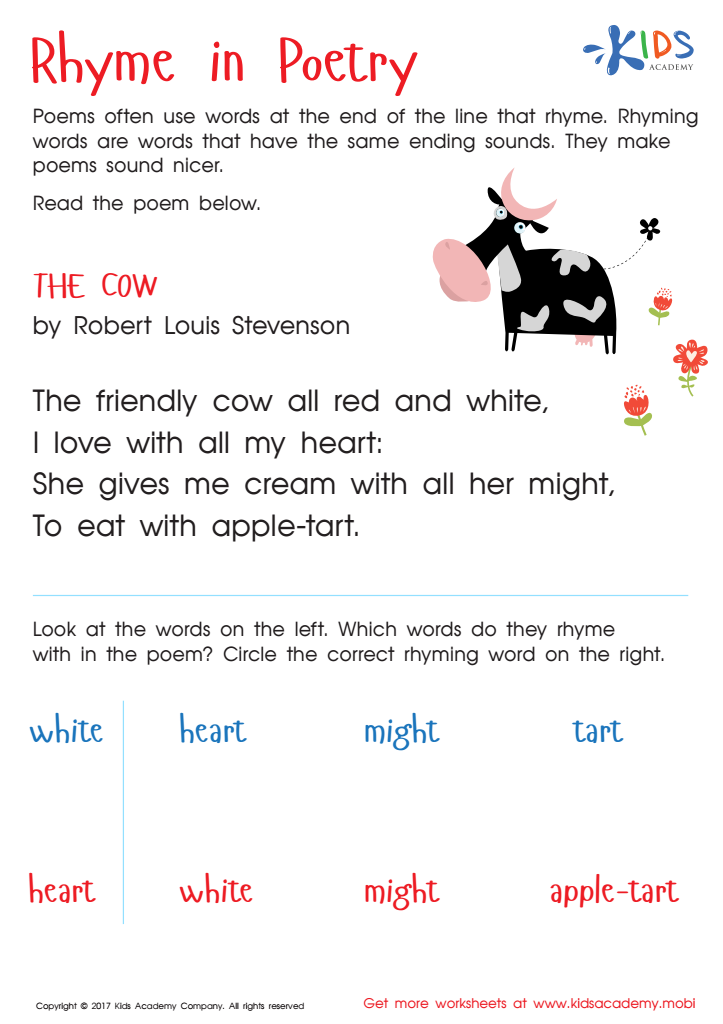

Rhyme In Poetry Worksheet
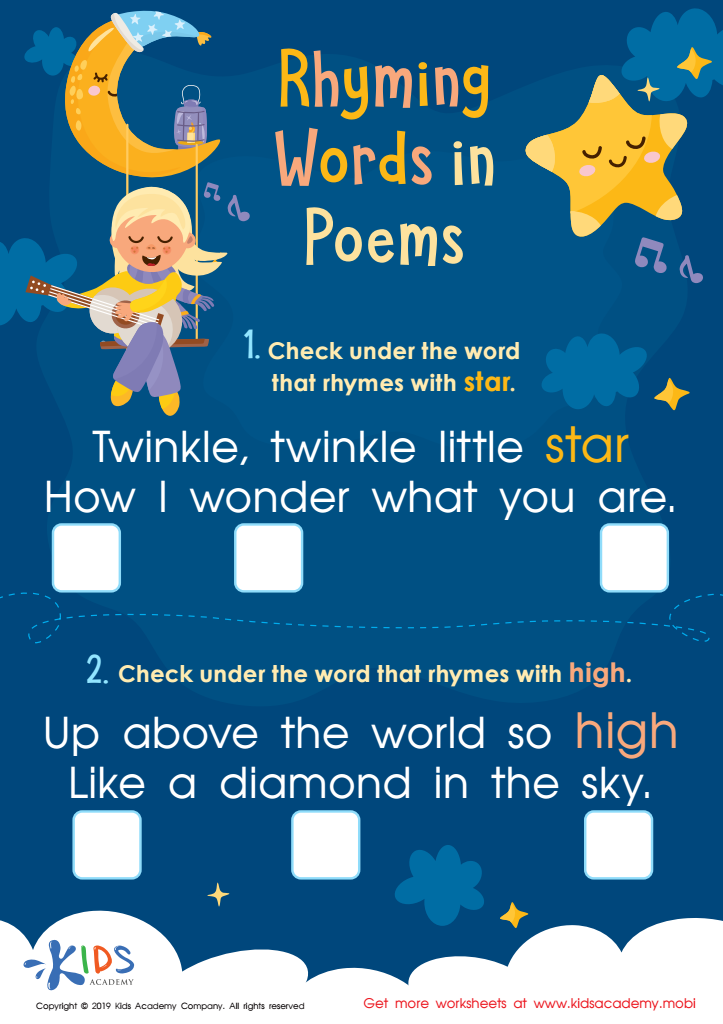

Rhyming Words in Poems Worksheet
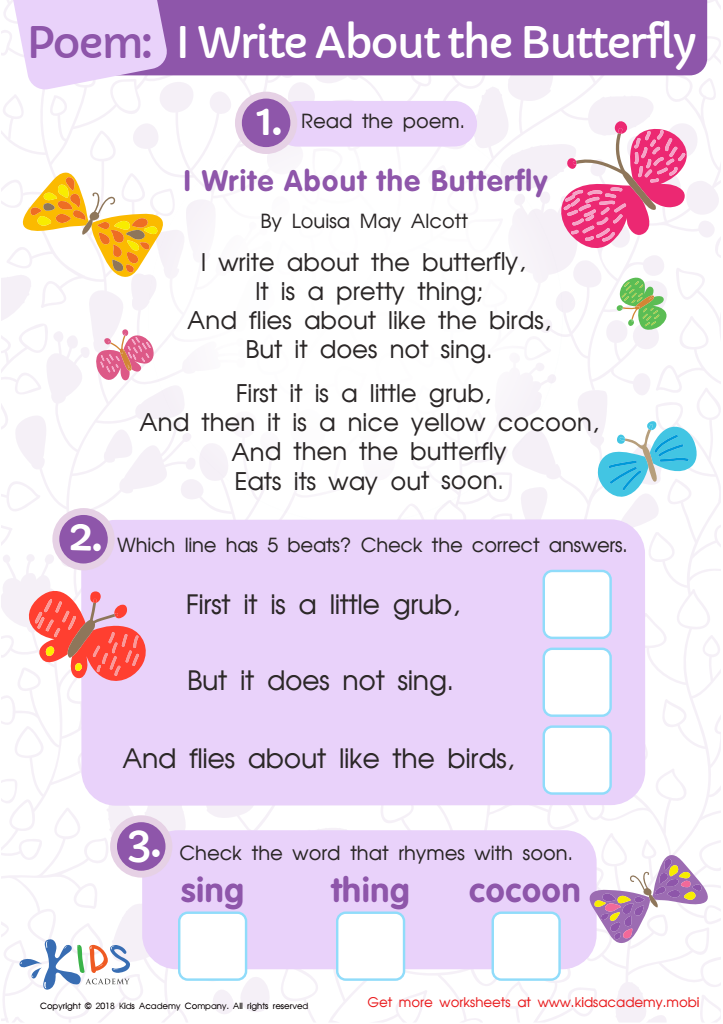

Poem: I Write About The Butterfly Worksheet
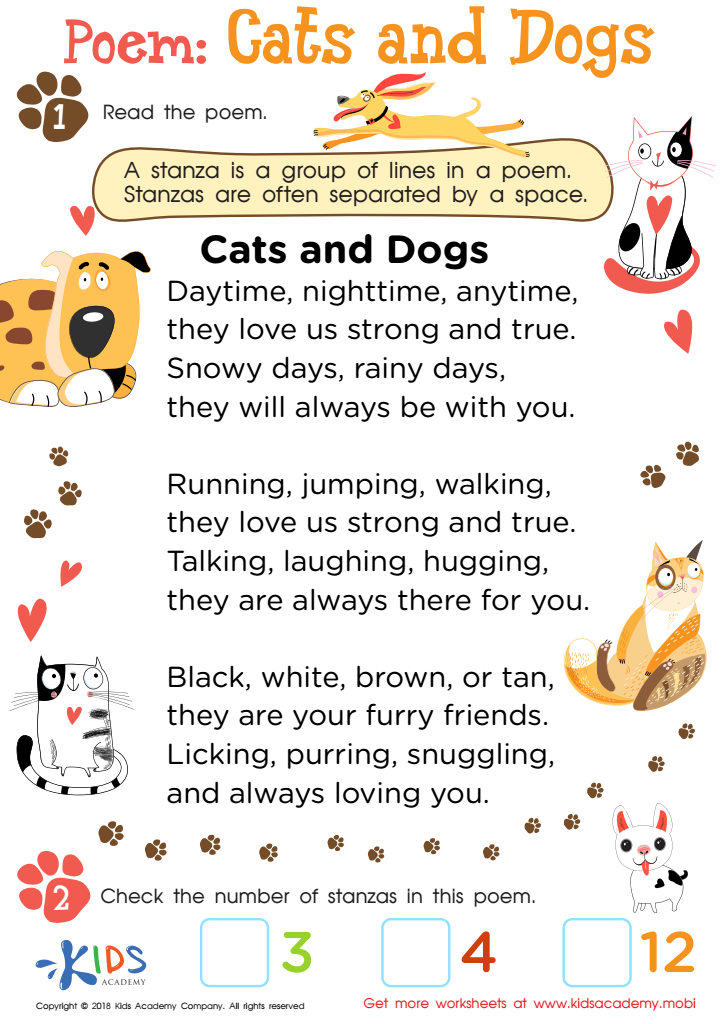

Poem: Cats and Dogs Worksheet
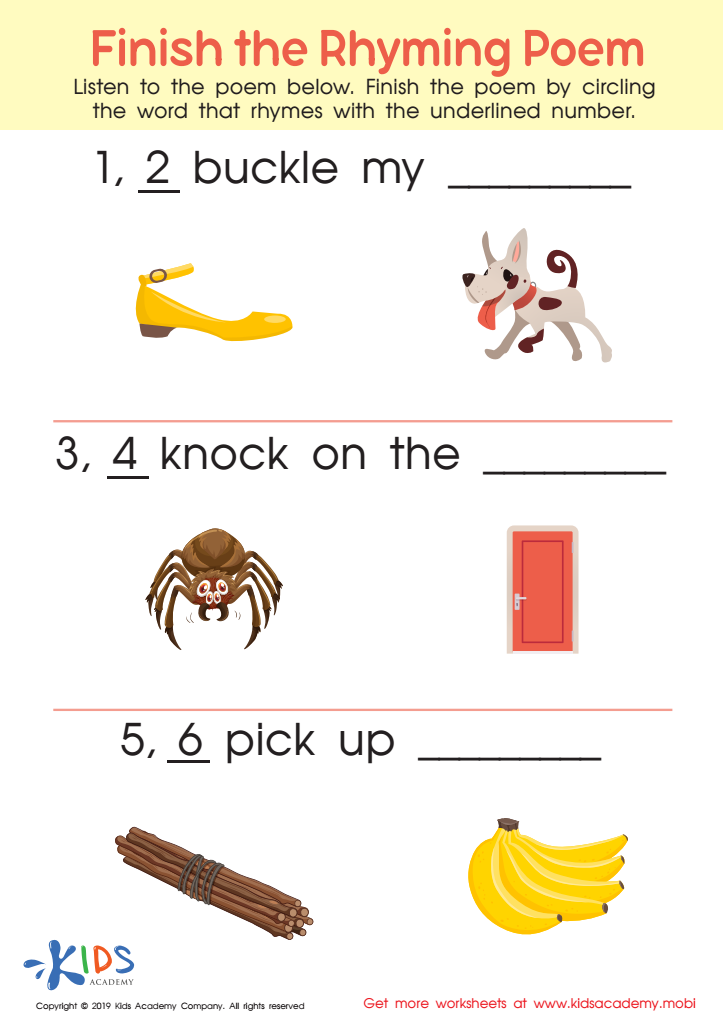

Finish Rhyming Poem Worksheet
Parents and teachers should prioritize Normal Poems Activities With Answers for Ages 4-8 because they play a crucial role in early childhood education. Poetry activities promote language development, allowing young learners to expand their vocabulary and improve phonemic awareness. Engaging children with rhythmic and rhyming texts enhances their listening skills and encourages active participation in learning.
These activities spark creativity and self-expression in kids. By exploring themes in poetry, children learn to express their feelings and ideas, fostering emotional intelligence and empathy. Additionally, incorporating questions and answers into poetry sessions helps develop comprehension skills, teaching children to analyze and engage with texts critically.
Furthermore, Normal Poems Activities are versatile; they can easily be infused into various subjects, making learning holistic. They often promote patterns and structures found in both literacy and numeracy, enabling cross-curricular connections.
Lastly, poetry activities can create bonds between parents, teachers, and students, as they often facilitate fun, shared experiences during reading sessions or classroom activities. In summary, these poetry activities are essential tools for nurturing well-rounded development in young learners, and fostering an early love for literature and learning.
 Assign to My Students
Assign to My Students


